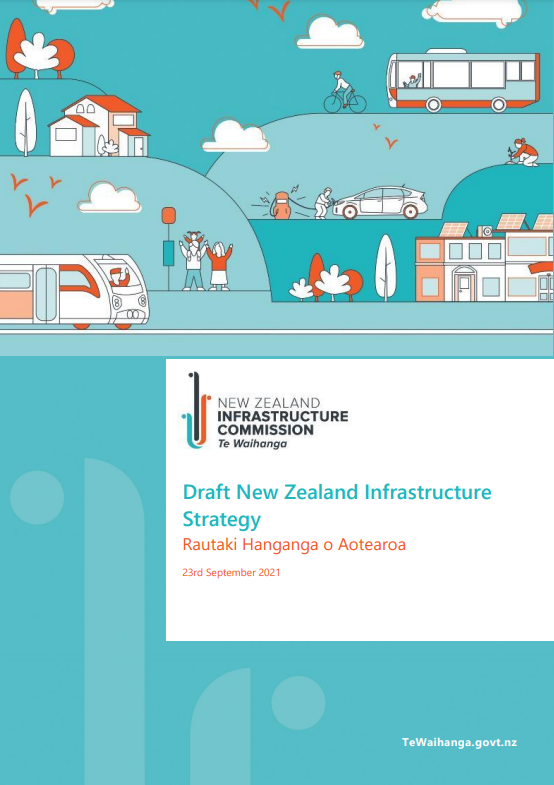On behalf of our members, ACE New Zealand gave feedback to the Infrastructure Commission during the consultation phase emphasising the need for workforce planning, the need for better funding and risk-sharing, and a predictable pipeline of infrastructure work, to allow firms to invest with certainty. We are pleased to see the draft strategy reflects these points.
 The draft strategy puts forward five objectives to achieve a thriving Aotearoa with a welcome focus on environmental sustainability:
The draft strategy puts forward five objectives to achieve a thriving Aotearoa with a welcome focus on environmental sustainability:
- Enabling a net-zero carbon Aotearoa through the development of clean energy and reducing carbon emissions from infrastructure.
- Supporting towns and regions to flourish through better physical and digital connectivity and freight and supply chains.
- Building attractive and inclusive cities that respond to population growth, unaffordable housing and traffic congestion through better long-term planning, pricing and good public transport.
- Strengthening resilience to shocks and stresses by taking a coordinated and planned approach to risks based on good quality information.
- Moving to a circular economy by setting a national direction for waste, managing pressure on landfills and waste recovery infrastructure and developing waste-to-energy options.
The draft strategy goes on to identify the pre-conditions of an infrastructure system to deliver on those goals. ACENZ particularly supports the focus on value (rather than least cost) improving funding, and building the workforce along with a predictable pipeline of work.
- Better decision-making: decision-making that has a relentless focus on selecting the infrastructure that will create the most value for New Zealand.
- Improving funding and financing: infrastructure needs adequate funding and access to financing. Make the best use of infrastructure pricing that enables demand management, while managing disadvantage through appraisal of social assistance measures.
- An enabling planning and consenting framework: The infrastructure system requires a planning and consenting system that is strategic, coordinated and commensurate to the urgency of the challenge, recognising the unique role infrastructure plays in our collective wellbeing and enabling the sustained infrastructure build needed.
- Accelerating technology use: Technology has the potential to improve infrastructure delivery. Accelerating the adoption and widespread use of technological and digital change across infrastructure industries requires a greater focus on open data and the adoption of digital technologies to improve productivity and enhance infrastructure planning, delivery and operation.
- Building workforce capacity and capability: We need the right people, at the right time, with the right skills. Currently, we face a historic workforce shortage across all aspects of infrastructure delivery. The development of a credible infrastructure pipeline and list of priority projects will provide the industry with more certainty to invest in worker training and retention. Improving workforce diversity and safety across the infrastructure sector must also be a priority.
Infrastructure Minister Grant Robertson will now give his feedback before the finalised strategy is published by the Commission in early 2022 and tabled in Parliament. The Government will then have six months to formally respond to the recommendations.
